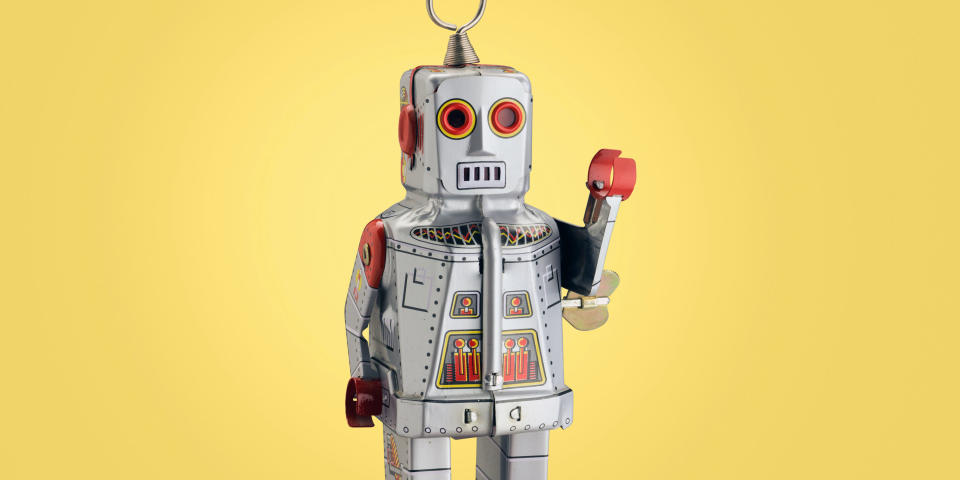Robots May Be the Future of Fashion

Robots are terrible at sewing fabric. It's too complicated of a process, and it's left the garment industry out of the mechanization revolution that has swept through aviation and the automobile industries. But a man named Jonathan Zornow wants to change that.
Fast Companyrecently profiled Zornow and his revolutionary new process called Sewbo, whereby fabrics are chemically stiffened with polymers so that automated robots can more easily produce a full garment. The biggest problem with past attempts at automating garment manufacturing, according to the article, was that companies tried to emulate the way humans sew. Which, due to that process's intricacies, didn't work. So Zornow went the other direction and manipulated the material to make it more easily handled by robots.
"[The fabrics are] stiff as a board, but they can be molded: You can apply heat and reshape them, and when they cool down, they'll hold their shape," he explained. So the robots are now able to sew through the stiffened material to create a finished garment. Once ready, the polymer would then be washed away with water-no detergent necessary-and the material would return to its normal state, only as a completed article of clothing.
This raises interesting questions. Because while automation does take away human jobs, the current frenzy over cheap clothing has created a whole host of unethical labor issues-like the ones that recently caused a factory fire in India killing 13 people-and robots could potentially avert that.
But what happens to the people who, without those factory jobs, would have no work? It's a tricky issue. On one hand, people are being horribly exploited. But on another, people in developing countries need something that will generate an income. The more humane alternative would seem to be to just pay more for clothes so that labor abuses (and environmental abuses) aren't encouraged. But the genie is well out of the bottle on that one.
[contentlinks align="center" textonly="false" numbered="false" headline="Related%20Story" customtitles="What's%20the%20True%20Cost%20of%20Cheap%20Clothing?" customimages="" content="article.50671"]
Another potential benefit to robots, as is mentioned in the article, is that it could help with re-shoring apparel manufacturing here in the U.S. By eliminating the need for skilled labor-which is in short supply in this country and too costly for most consumers' tastes-Sewbo could make it possible for U.S. companies to competitively manufacture clothes here. Which, though it wouldn't create factory jobs, would at least create more jobs at the managerial and administrative level.
So there you go. Robots in apparel manufacturing may be good, or they may be bad. They may give us cheap clothes and U.S. jobs, or they may detrimentally impact the economies of developing nations. Or they may just take over the world in a robot revolution and plug us all into a Matrix in order to use our physical bodies as glorified batteries.
You Might Also Like

 Yahoo Finance
Yahoo Finance 